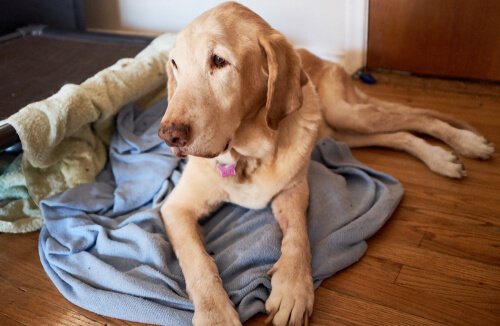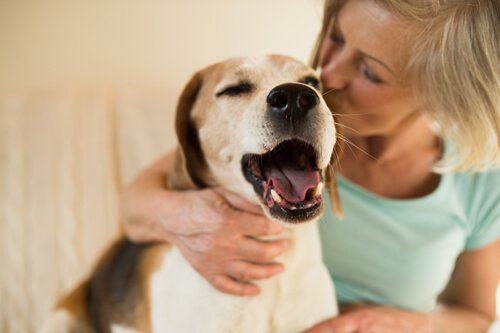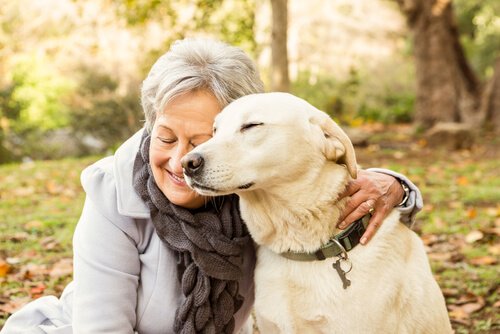Amnesia in Pets: signs, symptoms and care

According to recent research, amnesia in Pets is possible. People often believe that dogs have no memory because they only live in the moment. However, dogs actually have a different memory than humans, and it can also be affected by amnesia.
At a certain age, two out of four dogs may develop Alzheimer’s disease, also known as cognitive dysfunction. What are the symptoms? How do you care for a pet with amnesia?
Signs and Symptoms
Cognitive dysfunction syndrome takes place in dogs that are older than eight years. The main signs of amnesia are changes in their habitual behavior and disorientation.
Just like it is when humans age, a dog’s brain also deteriorates. Over time, cognitive functions, one’s ability to learn, decline along with a loss of vision, smell, and hearing.
A dog is considered to be elderly when he is over ten years old. It’s normal for their behavior to change and them to be no longer be as they were before.
Among the changes that you may notice in your dog are the need to sleep longer, a decrease in energy and patience with other animals and children. Your dog won’t become aggressive, but they will prefer to be alone in a quiet place, away from anything that may bother them.
Another change that you may notice is his indifference towards you. For example, your pet isn’t as affectionate as they used to be when you come back from being away.

Different and Strange Behaviors
As live with amnesia, they may also display erratic behaviors. Your dog may stand in the middle of the yard focusing at one spot, they may fall asleep while standing up, or they may not show any emotion when they’re given a toy that used to be their favorite.
Canine amnesia is also shown through strange behaviors. Dogs forget the reason why they went out into the yeard or be disoriented in familiar places.
They may even forget to relieve themselves during their daily routine, or they won’t respond to their owner’s commands. As for their physical state, signs of aging will also be noticeable.
They will become slower, have difficulty going up and down stairs, and won’t be able to walk long distances. Their sight and hearing will decline, so it will become difficult for them to recognize common places and the people that they live with.
The Owner’s Reaction
These changes can cause feelings of anguish in owners. Their pet is no longer the same and doesn’t respond to their affection or be playful anymore. However, with some special care, the animal can live a comfortable life.
If necessary, the vet will prescribe some medication to counteract the deterioration and the diseases that accompany amnesia. However, you must understand that cognitive dysfunction syndrome has no cure.

How to Care for a Pet with Cognitive Dysfunction
A dog with this disease needs to be treated with affection and patience. If they normally need a positive and warm environment, now they will need them even more. Their alone time must be respected and some changes will need to be made. Your dog may need to lay down more than before, and will often doze off in his favorite corner.
Just because they prefer their quiet time, doesn’t mean that they want to be left alone all day. Elderly pets need their owner’s company, and it’s possible that physical activity will now be more difficult for them. In any case, short walks at a slow pace on a daily basis are still necessary.
Drastic changes like a trip or a move are difficult for dogs to deal with. These changes affect their memory, accelerate amnesia and other degenerative symptoms of their cognitive faculties.
That’s why it’s necessary to plan well when it comes to leaving your pet with someone. If you choose to bring them with you, try not to modify their routines so they don’t get disoriented or lost.
Unfortunately, in some cases, owners may have to resort to euthanizing their pet so they won’t suffer and avoid extreme behavioral changes at home. However, it’s been shown that affectionate treatment, games and short walks will help slow the deterioration of pets.
At the first signs of cognitive dysfunction in your pet, it’s essential that you go to your vet for an evaluation. An early diagnosis is vital to give your pet a better quality of life.
